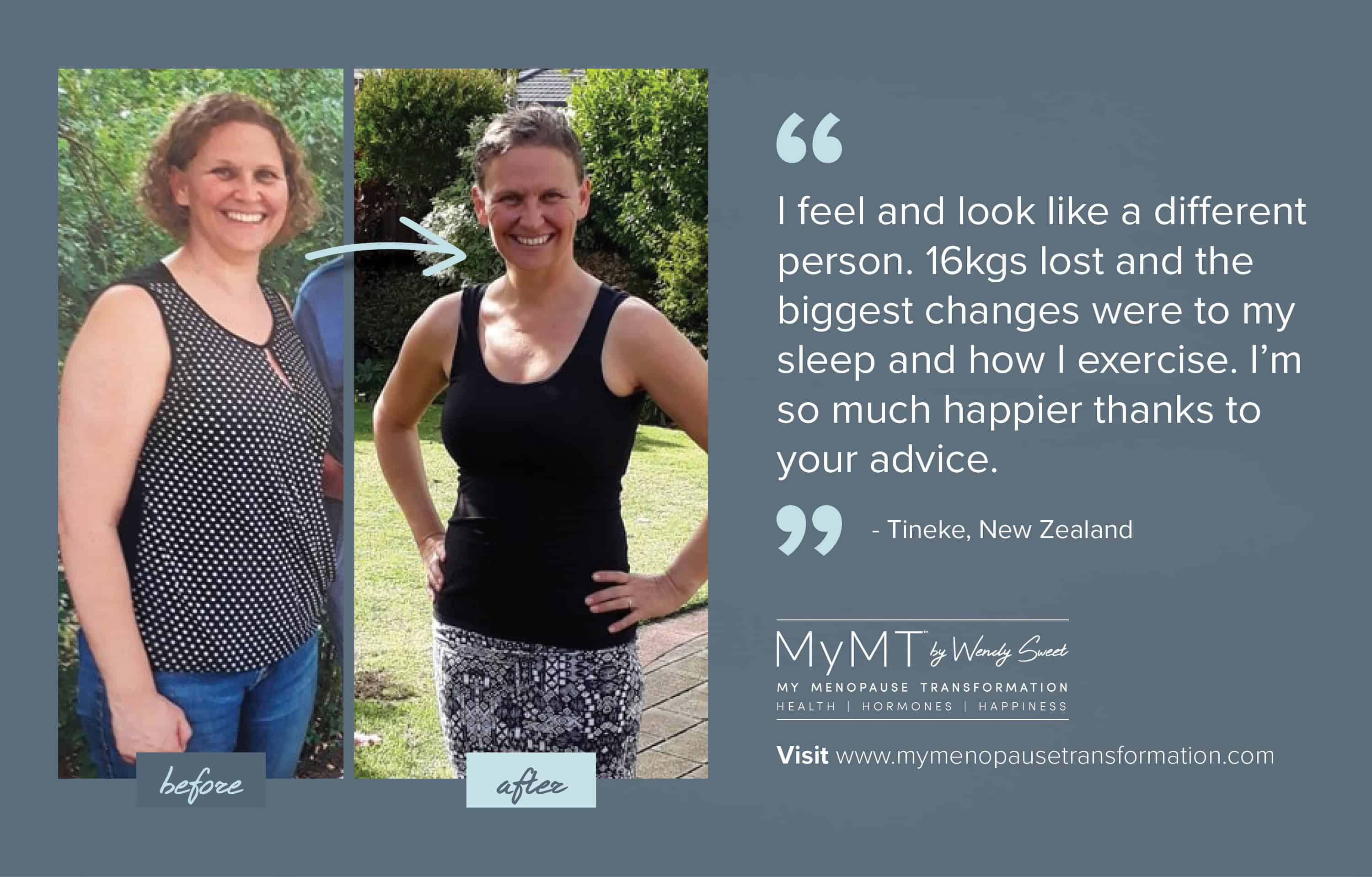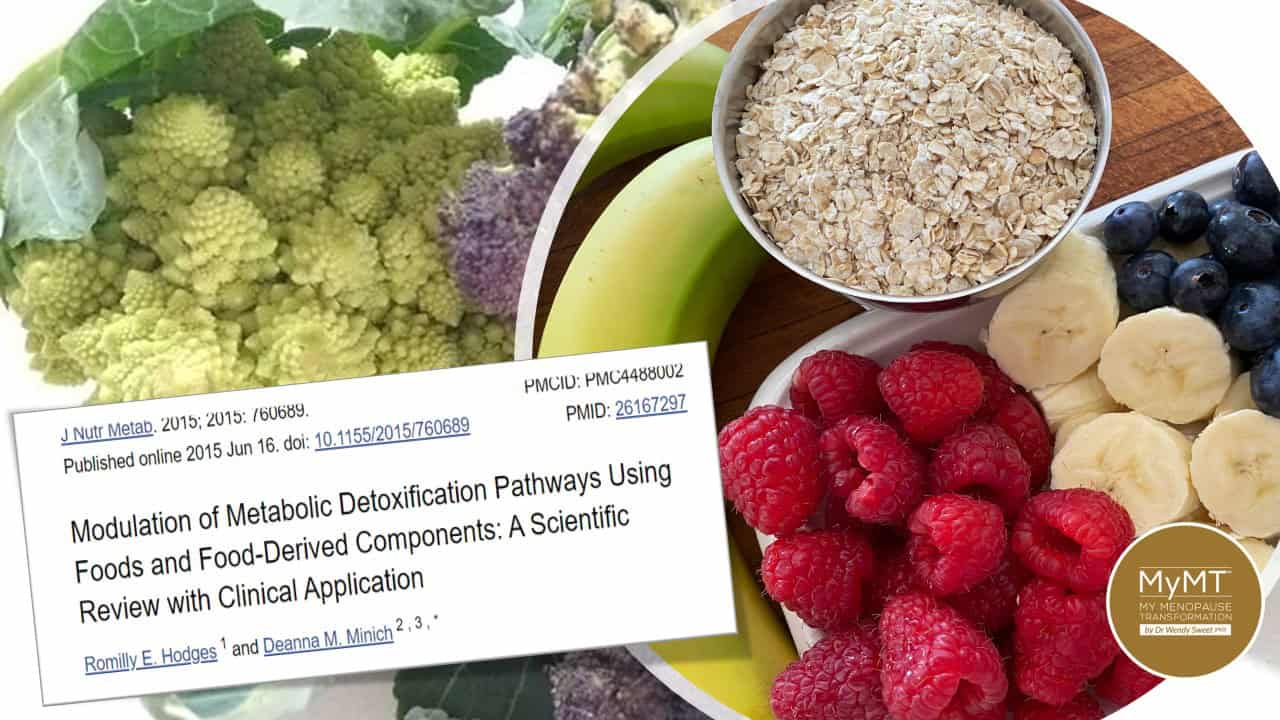Not all women put on weight in menopause – in fact, some women need to gain weight as they are too thin, and therefore may be increasing their risk for frailty as they age.
But with the prevalence of overweight and obesity and a condition called Metabolic Syndrome, being reported the highest in women aged between 50 and 64 yrs (Moreira et al, 2022), if you are putting on belly fat and your diaphragmatic fat is increasing, as you reach your early to mid 50’s, then you aren’t alone.
If this is the case, then I also have some questions for you:
- Are you sleeping all night, every night?
- Are you heavier now, than throughout your life?
- Are you losing muscle tone or you have sore joints and muscles?
- Do you feel bloated, ‘puffy’ and tight, especially in your breasts?
- Do you feel excessively tired after a meal?
- Do you feel easily frustrated and irritable?
- Are you on HRT but this isn’t helping your weight gain now that you’re in post-menopause?
- Are you currently doing high intensity exercise, but this still isn’t helping you lose weight like it did in the past?
- Do you feel that your breathing has changed and you are more breathless on exertion?
When I also experienced all of these issues, I had no idea how much my changing shape during menopause was influenced by a range of factors that had little to do with changing reproductive hormones. These factors included:
- poor sleep
- changing liver and gut health
- inflammatory changes in organs due to ageing
- fatigue
- changing Vitamin D levels
- nutrition and exercise advice that isn’t targeted towards women in mid-life
- muscles that are changing in function with age, and the effect of this on insulin and glucose regulation.
The combination of these factors change our metabolism.
Add to this, that with the loss of muscle tissue, we also lose size in our essential mitochondrial cells. This means that we may not be burning fat the way we used to prior to our menopause transition.
Many of us don’t understand that it’s not menopause, per se, we need to focus on, but instead a condition called ‘Metabolic Syndrome’.

These factors create the ‘perfect storm’ for our waist circumference increasing, as well as changes to diaphragm and belly fat during our menopause transition. Furthermore, fat cells also produce their own oestrogens. A higher waist circumference correlates with higher oestradiol production in subcutaneous fat. [Hetemaki et al, 2021].
This is a part of the reason that women may develop changes to their health as they age. These health changes include Type 2 diabetes and heart disease. Being overweight is also a risk for breast cancer. Something else we can’t ignore with weight gain in post-menopause.
One of the strategies that women take to help manage their weight is to undertake exhausting, high-intensity exercise, but as I often mention, if women aren’t sleeping, then this can tip them over into more adrenal exhaustion.
The combination of heavy exercise and insomnia leads many women towards adrenal fatigue – symptoms which mimic menopause symptoms.
Physiology is the science of how the body works and having taught university-level physiology for years, I began to piece together the real science behind my own weight gain and why, not one thing I was doing at the time, was working to control my weight gain.
The weight-gain trajectory that we go on as our hormones change in midlife, is something that may not be being understood by many exercise and health professionals here in New Zealand.
I know this, because in my doctoral defence I argued that women in mid-life were being forgotten when it came to understanding health changes in mid-life.
It was no surprise that at the online Diabetes Symposium I attended last year, that I heard Professor Roy Taylor from the University of Glasgow mention that women between the ages of 50 – 59 years were one of the highest cohorts to develop Type 2 diabetes and Metabolic Syndrome.
With a 15kg weight gain in my early 50’s, this was the slippery slope that I was on too.
If your body shape is changing and you are struggling with weight gain and ‘nothing you are doing is working’, then have a read when you can.
The Science Behind Your Changing Shape in Menopause
As we go into menopause our levels of oestrogen and progesterone naturally decline.
However, what many women don’t realise (as I didn’t either), is that the master reproductive hormones in our pituitary gland actually ‘control’ menopause.
These two master hormones, Luteinising Hormone (LH) and Follicle Stimulating Hormone (FSH), take longer to decline as we age, so in peri-menopause (the time before your periods cease in menopause), they are still trying to send chemical signals to the ovaries to keep producing oestrogen.
During your transition through menopause, the cells in your ovaries are dying-off. This is a natural part of your biological ageing but what it means is that there are less ovarian cells available to take the messages from your master-hormones.
These chemical messages travel to other parts of your body, where you also have oestrogen receptor cells. This includes your heart muscles, your skin, your liver, your bones and your fat cells – and here’s the thing, women have numerous fat cells around the belly, breasts, butt and thighs. This is genetic. We are born with a certain number of fat cells – this of course, explains the difference in body shape between thinner women and overweight women, throughout the life-course.
With the changes in muscle size and density as hormone levels change and as women age, body shape can also change more rapidly for many women.
This is because muscle tissue has oestrogen receptors too. Hence, they respond to our declining oestrogen environment.
With changes to muscle density, our metabolism also changes. Skeletal muscle has the most effect on our resting metabolic rate. Body-builders the world over know that muscle is important for metabolism and because the rate of muscle loss is highest for women during menopause, we don’t ‘burn’ as many calories as we used to.
This muscle loss condition is called sarcopenia.
Muscle is needed so that we burn fat in our mighty mitochondrial cells. This is where fats are converted into energy.
One of the greatest effects on weight gain in menopause is our changing metabolism. Muscle tissue has the most effect on our resting metabolic rate.
So, holding onto muscle as we go into menopause or doing strength activities and the right type of cardio activity is really important as we age, but we can only influence muscle tissue, when we are sleeping, eating the right food and looking after liver and gut health.

Numerous other factors impact menopause weight gain too. To improve our fat-burning capability when our hormones are against us, we need to achieve these things:
- Sleep all night.
- Improve liver health and function by reducing fatty liver.
- Improve gut health, so nutrients are better absorbed.
- Hold onto our muscle tone.
- Manage our blood sugar levels and therefore, our insulin regulation.
Managing these factors is crucial for weight loss as we get older. The most important factor to me, is sleeping all night.
Menopause has such an impact on our sleep patterns, but so too does our lifestyle, e.g. staying up late, using technology and eating the wrong foods at dinner-time.
All of these factors impact on the production of our sleep hormone called melatonin. When melatonin levels are too low before bed-time, then we can experience more hot flushes, night sweats and as many of you will already know, you lie awake.
But when this happens night after night, you lose your overnight fat-burning capability too.
In the video below, I explain some of these factors to you. I hope you can have a listen sometime.
Look After your Liver and Gallbladder for Menopause Weight Loss:
Your liver and gall-bladder are also important for your weight loss during menopause. Turning around the health of your liver during menopause is important for fat-loss.
The reason for this is because fats are broken-down by bile and bile is stored in our gall bladder.
In the past this system has worked well for you – because you’ve had oestrogen production in your ovaries. But as oestrogen levels naturally decline, we also produce less bile. This changes fat emulsification in your gallbladder.
On top of this is the fact that as women in our early 50’s, we’ve had a lot of different changes to our diet over the years which has possibly impacted on the health of our liver.
Changes to the liver with ageing and changes to our diet over many years, can also increase inflammatory changes in the liver.
When inflammation is present in the liver, then it doesn’t absorb the crucial B-vitamins, which we need for our energy. Furthermore, if you already have a fatty liver, then you may not be turning over and absorbing important proteins, which help you to retain your muscle as you age.
For many women putting on a lot of belly fat, or if you have the ‘hard-fat’ sitting around your abdomen, then please try to come on board into my ‘Transform Me’ weight loss programme. It’s in this programme, that I teach you about sleeping all night along with how to improve your liver and gallbladder health and function. These interventions are the foundation for stopping the weight gain, which is the first step you must achieve.
It’s also why I don’t promote the high-fat diets that are popular in the fitness and nutrition industries at the moment.
Many of these are not evidenced for the health of your liver at a time in your life, when your organs are ageing and changing.
Furthermore, if women are already on a slippery slope towards Type 2 diabetes and metabolic syndrome, then this is now understood to be caused by increased fat in the liver and pancreas. (Taylor, 2023). As such, women need to just spend a short amount of time (around 6 weeks), looking after their liver health.

Changing oestrogen levels during menopause, sarcopenia (muscle loss), liver health and insulin resistance are all connected to changing body shape during menopause.
So too, is lack of sleep.
When you aren’t sleeping, you aren’t getting enough secretion of two other important hormones necessary for retaining or building muscle. This is why I reiterate that insomnia has the greatest impact on your weight gain in menopause.
Interrupted sleep during menopause throws our muscle-building and fat-burning capability out the door. When we aren’t sleeping properly, two important hormones for glucose regulation, insulin and cortisol, levels tend to remain high throughout the day.
Higher levels of these hormones, may counteract fat-burning and muscle repair. This is why the most powerful thing I do for you when you come on board into the MyMT™ Transform Me programme, is to get you sleeping all night.
If you aren’t sleeping well, then this is the first breakthrough you need to focus on for halting any further fat-gain, as well as for helping you hold onto muscle.
Improving your sleep and your liver health, reduces inflammation in your fat cells, and improves the health of your beautiful mitochondrial cells.
These are located all over your body and they are the location of oxygen storage and the location of where fats and glucose are turned into energy molecules. When we lose muscle with sarcopenia, then we also lose the number and size of our mitochondrial cells.
When this happens we don’t burn fats as well, nor do we have as much energy. We begin to feel exhausted, and hot flushes may increase in severity as well. I know this, because that was me as well as numerous women who join me on the MyMT™ programme.

I am so passionate about women following a progressive step-by-step process to turn around their weight and their health during menopause.
Too many women are turning to crazy diets and exercise programmes when their hormones are changing, but what we need to is to restore the balancing act that our hormones require to pass through menopause.
Yes, often this can mean menopause HRT, but this is between you and your Doctor.
My focus is that you understand and put into action, the evidenced lifestyle changes that go with this age and stage of life too.
The hormonal changes across the menopause years substantially contribute to increased abdominal obesity which leads to additional physical and psychological health changes, making it tough for women who need to perform at their best in mid-life.
If we improve our sleep, lose excess abdominal fat, improve liver health, regulate blood sugar levels, reduce inflammation in our joints and hold onto muscle, then women’s healthy ageing research consistently reports that we are more resilient to health changes that are known to occur in older age.

References:
Davis S., Castelo-Branco C, Chedraui P., Lumsden M., Nappi R., Shah D., Villaseca P. (2012). Writing Group of the International Menopause Society for World Menopause Day 2012. Understanding weight gain at menopause. Climacteric, 15(5):419-29. doi: 10.3109/13697137.2012.707385.
Hall K., Guo J. (2017). Obesity Energetics: Body Weight Regulation and the Effects of Diet Composition. Gastroenterology, 152(7):1718-1727.e3. doi: 10.1053/j.gastro.2017.01.052. Epub 2017 Feb 11. PMID: 28193517; PMCID: PMC5568065.
Hetemäki, N., Mikkola, T., Tikkanen, M., Feng Wang, et al. (2021). Adipose tissue estrogen production and metabolism in premenopausal women. The Journal of Steroid Biochemistry and Molecular Biology, Volume 209.
Hidalgo-Mora JJ, Cortés-Sierra L, García-Pérez MÁ, Tarín JJ, Cano A. Diet to Reduce the Metabolic Syndrome Associated with Menopause. The Logic for Olive Oil. Nutrients. 2020 Oct 18;12(10):3184. doi: 10.3390/nu12103184.
Mair KM, Gaw R, MacLean MR. Obesity, estrogens and adipose tissue dysfunction – implications for pulmonary arterial hypertension. Pulm Circ. 2020 Sep 18;10(3):2045894020952019. doi: 10.1177/2045894020952023.
Rezuş E., Burlui A., Cardoneanu A., Rezuş C., Codreanu C., Pârvu M., Rusu Zota G., Tamba BI. (2020). Inactivity and Skeletal Muscle Metabolism: A Vicious Cycle in Old Age. Int J Mol Sci. 2020 Jan 16;21(2):592. doi: 10.3390/ijms21020592. PMID: 31963330; PMCID: PMC7014434.
Taylor, R. (2020). Life without diabetes: The definitive guide to understanding and reversing type 2 diabetes. HarperOne Publ: UK


